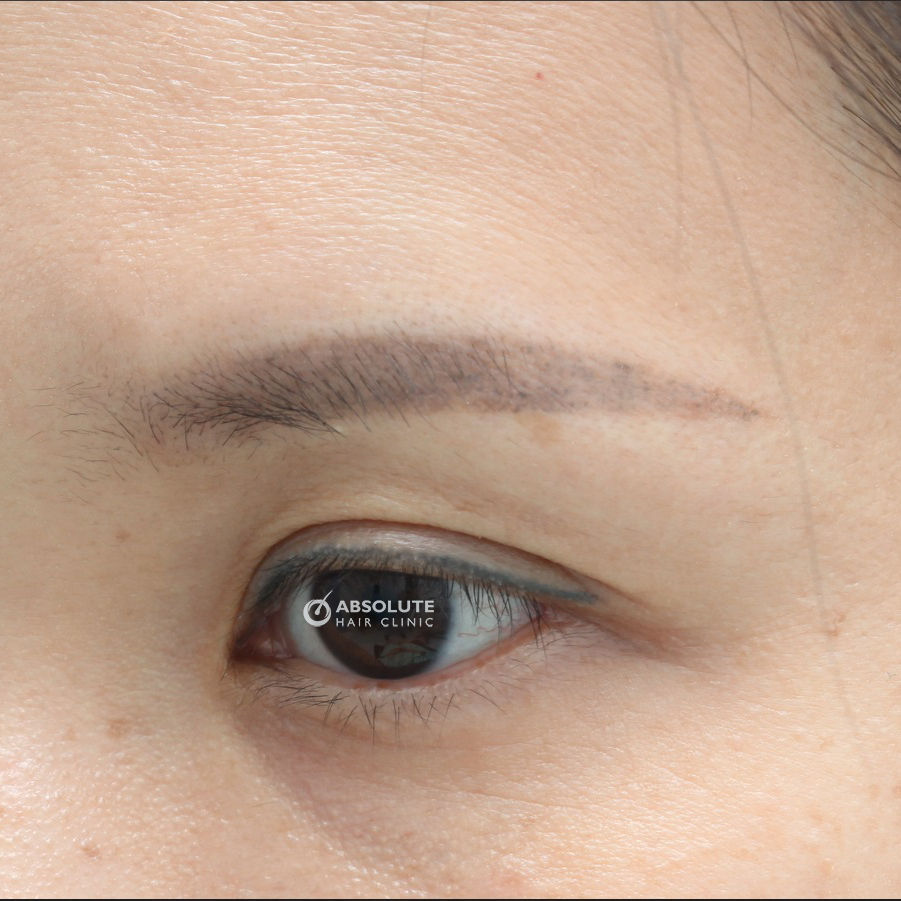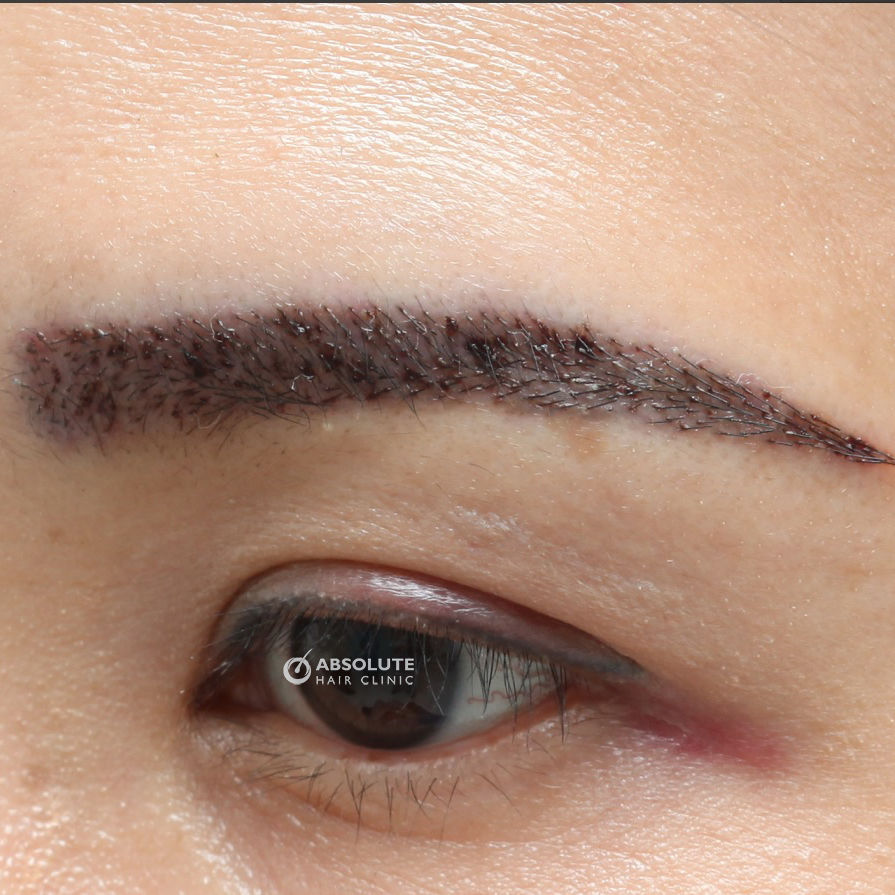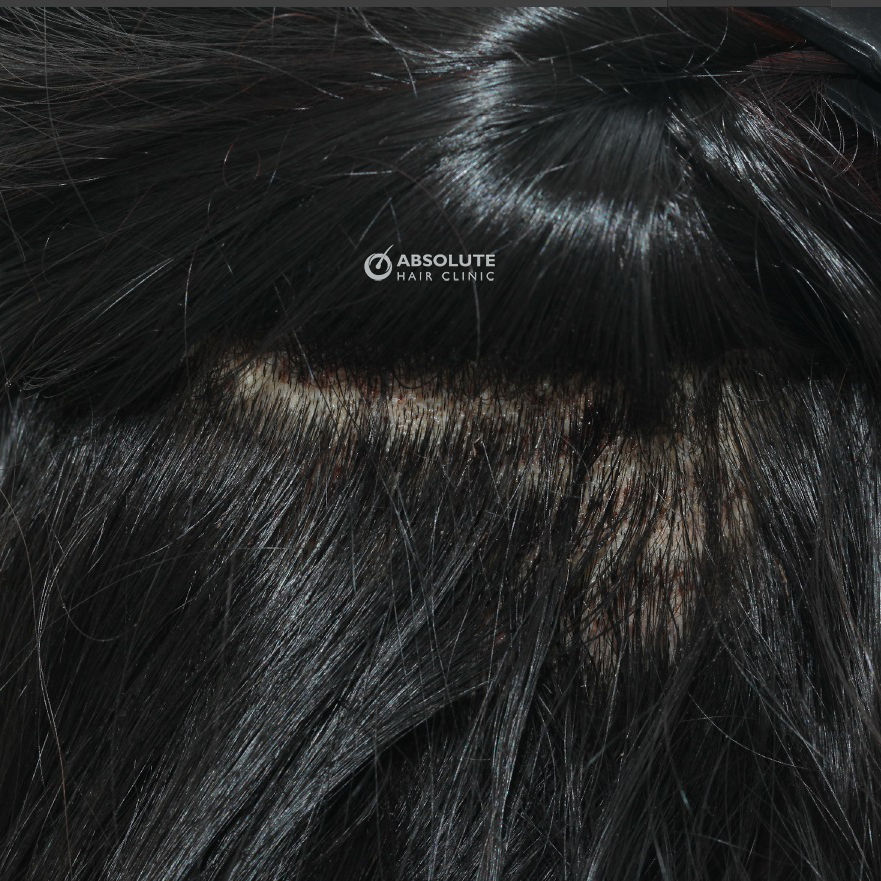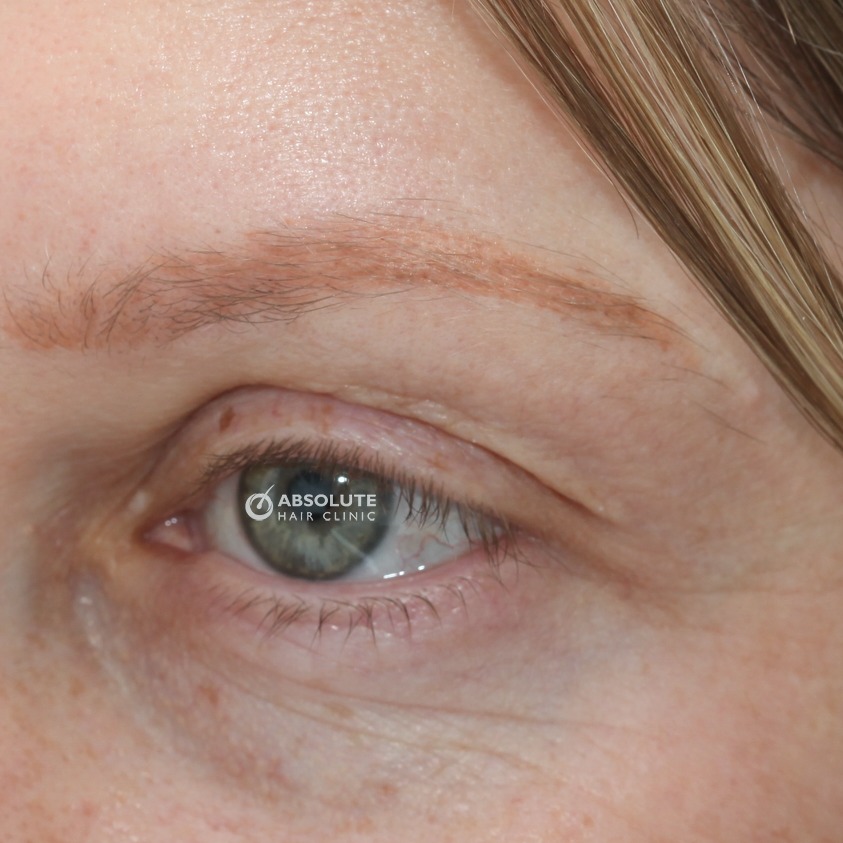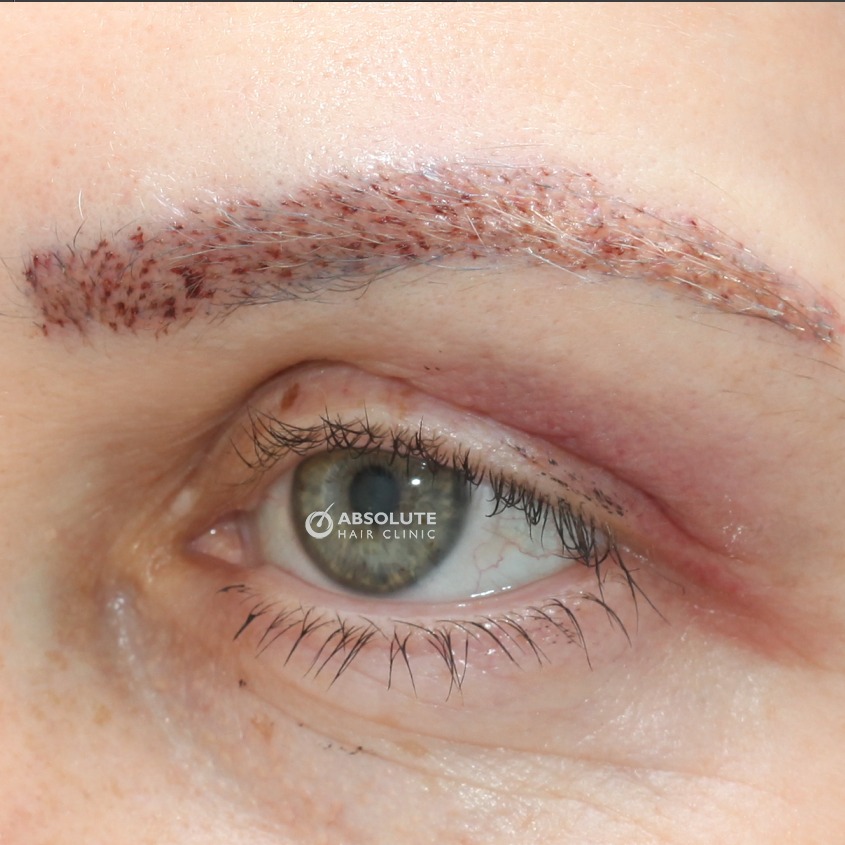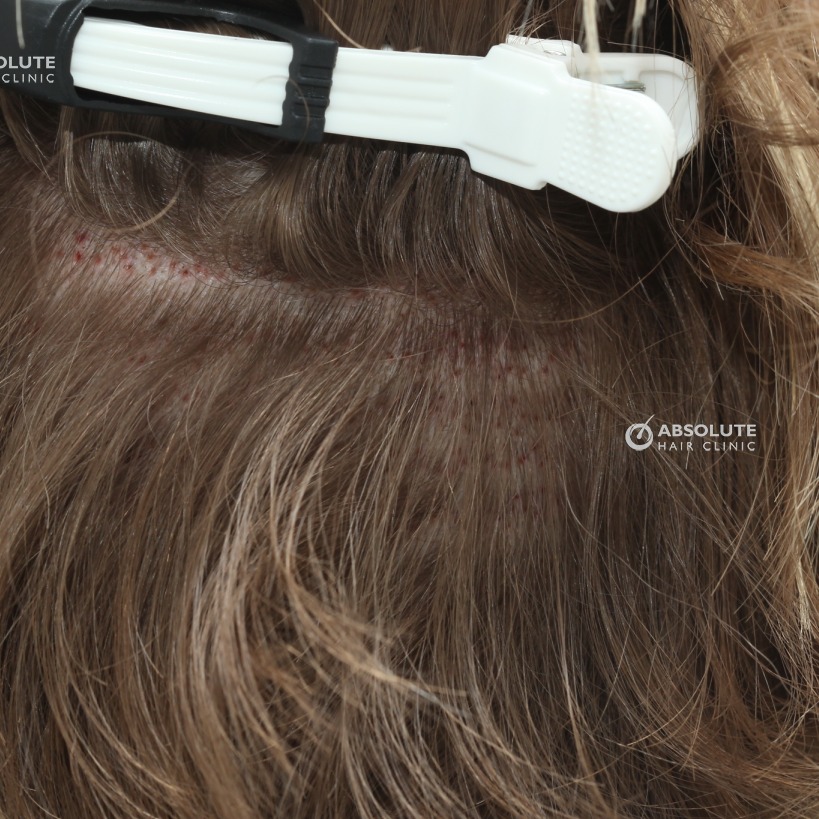Eyebrows transplantation Bangkok Thailand, FUE
Eyebrow Transplantation is the permanent and beautiful way to enhance your appearance with affordable cosmetic procedure in single visit.
Why eyebrow transplantation works?
The technique for eyebrow transplantation is similar to the artistry and the permanence of hair transplantation. The fast and effective procedure takes only two to three hours. The technique involves taking a small amount of hair from permanent donor area and transplanting them to the eyebrow region. The state-of-the-art follicular unit hair transplantation technique used for the procedure looks natural and is virtually undetectable with the transplanted hairs blending right in with the existing brow. This is a highly artistic procedure in which a brow is individually designed just for you based on your facial type, your features, and what you personally want to achieve.
Donor harvesting for eyebrow transplant
The surgeon and patient assist in drawing the outline of the eyebrow with marking in the sitting position. Matching the size of existing eyebrow with donor hair is done with micro caliber whenever possible. The donor site is selected from the mid-occipital area to match the caliber of the existing brow (it is least likely to turn gray). The number of grafts depends on the size and feature of the intended reconstruction of the brow. On average 150 to 400 single hair grafts are transplanted on each side.
Non-shaven FUE technique will be applied
The single hair grafts are carefully dissected under 10 times magnification microscope. Ultra skinny single follicular unit grafts were trimmed out the fat and tissue around the hair shaft but remained outer root sheath to accommodate 23 G needles and sometimes 24, 25 G needles for easy insertion and dense packing. These single hair grafts have not been further partitioned. Follicular units that contain more than two hairs are longitudinally sectioned into one-hair unit.
Graft Placement
The brow is cleansed with Betadine and anesthetized with 1% Xylocaine with epinephrine. No tumescent fluid is needed in this region. It is preferable to use 3 times magnification loupes performing simultaneous 23G needle stick-and-place in flat angle and dense packing of grafts. This planting technique in these size sites is easily accomplished after training.
Insertion of the grafts is crucial. Thus the surgeon must insert the grafts with the current of the hair shaft in alignment with the axis of the brow; otherwise the hair will flow out of the axis result in an unnatural look. The eyebrow is divided into three portions to help determine how many sticks need to be made in each segment for uniform density and symmetry. When the needle is inserted, the direction in superior edge of medial third will direct down below to the brow axis instead of upward as in the normal anatomy. This modification is needed because the transplanted hairs are thicker than normal eyebrow hairs. Transplanting hairs in an upward direction in the medial part produces growth that may be unnatural. For the other two portions, the plan is to have hairs converge to each other and the needle is inserted in an acute angle to almost flat. The medial and middle portion is transplanted more densely. The lateral border is feathered superiorly and inferiorly. In addition, the borders of the eyebrow must be irregular with finer caliber hairs transplanted in the peripheral area. Just prior to completion the patient examines the transplanted eyebrows to see if any adjustment is needed.
Postoperative Care
Alo Vera gel is applied without any dressing for 3 days to help control the hair angle flat to the skin and promote the wound healing process. Compress dressing used to be done to keep the angle flat, but the results showed no difference.
Bruising and mild puffiness over the upper eyelid usually lasts for 3-4 days. Most eyebrow transplants do not shed and continue to grow in contrast to scalp hairs - thus they need trimming once a week. If the patient requires more density, a time frame of at least 6 months is recommended.
Post Operative Instructions for Eyebrow Transplantation
Eyebrows transplantation is a delicate procedure. Your adherence to the following instructions is essential for optimal result.
WARNING
- DO NOT drink alcohol for 48 hours after the surgery. Alcohol thins the blood and may cause bleeding.
- DO NOT take aspirin, Motrin, NSAIDs for 2 days after surgery (except if the doctor approves the intake of these drugs) as these can also thin the blood and cause bleeding. If you are in doubt call the clinic.
POSTURE
Do not bend over but rather lower your body to pick up things for the first 5 days to prevent swelling.
DIET
Do not over eat food after surgery because this may cause stomach upset especially with the drugs you’re receiving during surgery, no restricted food.
SLEEPING
Keep the head elevated with two pillows and use a towel roll under your neck to help relieve the pain. Lie on your back, try not to sleep on your sides because the grafts might rub on the pillow.
POST – OPERATIVE MEDICATIONS
- Antibiotics (Ibilex500mg) 1 cap 3 times a days for 3 days to help prevent infection, should be finished.
- Pain killers: You may take Tylenol 2 tablets every 6 hrs or IF NEEDED.
- Sleeping pill (Valium 10mg): take 1 pill at bedtime.
SHAMPOO AND CLEANUP
TRANSPLANTED AREA
The day after surgery you'll come back for check up, changing the bandage and cleanup Your eyebrows will be washed 48 hours after surgery. We want the grafts to adhere solidly during this time.
- Wet your face with a bowl of room temperature water or with a gentle stream of water from the shower. If you use the shower block the stream with your hand so that the water pressure is not too strong.
- Lather up your facial foam, baby shampoo or soap on the palm of your hands.
- Pat it on the area gently (DO NOT RUB) and let it sit for 1-2 minutes.
- Gently rinse off with a bowl of water or a gentle stream of water from the shower.
- Pat dry gently with towel.
DO NOT RUB THE GRAFTS TO DRY THEM. - Do this twice a day starting 48 hours after surgery.
- After 7 days you can begin to lightly rub the grafted area from medial to lateral to help remove crust.
- After 14 days you should be able to wash normally.
DONOR AREA
You can be more aggressive with the donor area. Wash this daily starting 24-48 hours after surgery.
NAUSEA/VOMITING
This may occur in less than 10% of patients after surgery. This is due to the medication given during surgery. Don’t panic because this condition is self limited.
BLEEDING
On occasion slight bleeding may occur from either the graft site or donor site. If this occurs, apply gentle but firm pressure to the area with the gauze provided or a clean cloth.
APPLY THE PRESSURE FOR A FULL 5 MINUTES.
The bleeding should stop. If it does not, please call us.
HEAD BAND or BANDAGE
It should not be removed in the first 24 hrs until you come back for check up in the next day. It helps stop bleeding on the donor area
SWELLING and BRUISES
Swelling (puffy upper eyelids) and bruises is common after surgery . It will stay for 2-3 days.
ITCHINESS
A few days after surgery, early sign of wound healing is itchiness either in transplanted or donor area. If you have this symptom, do not scratch it! Cold compression, gentle pat or touches will relief it. If there is no improvement, anti-histamine drugs may be prescribed.
SCAB or CRUST
Small crusts may form on each graft,. These crusts will flake-off by 5–14 days after the surgery. Alo Vera gel given to you will accelerate scab falling by applying twice a day after washing. Apply Alo Vela gel by using cotton tip applicator with thin film fashion from medial to the side. Do not pick at the scab, let it fall off by itself.
TRIMMING
You are able to start trimming the eyebrow hairs after 14 days. How do you know when it's time to trim your eyebrows? One trick you can do is take your brush, you just merely brush your eyebrows down or up and if the hairs fall far outside the eyebrow line, then it's time for a trim. You can see on your eyebrow the main line of the hair. All the extra ones are the stragglers; those are the ones you need to trim.
GROOMING
Clear mascara can be used after 14 days ; coloring after 1 month
EXERCISE AND ACTIVITY
No exercise for 7 days after the procedure. It could result in increased swelling or lost grafts. After 7 days mild exercise can be resumed and after 14 days normal exercise can be resumed.
SWIMMING AND SUN
You should avoid swimming and sun for at least a few weeks after surgery. Remember there are acids
chlorine and bacteria in pools! The skin of the grafts is not used to the sun and may burn easily and the redness will persist longer. Should wear a cap or sun glasses.
FOLLICULITIS AT THE GRAFT SITE(pimples)
On occasion a patient may develop a folliculitis at the grafted site, these look similar to acne or pimple. If this happens apply moist warm soaks for 15 minutes and apply antibiotic ointment to the areas 3 times a day.
TEMPORARY HAIR SHEDDING OF DONOR AREA (SHOCK LOSS)
In few patients there may be shedding of the hairs above and below the suture line. Don’t worry because this condition is temporary and the hairs will grow back in 3-4 months.
REDNESS OF DONOR SCAR
In most patients redness over the donor scar fades in few weeks however in few patients the redness may take several months to disappear.
SAUNA
No sauna for at least a few weeks.
Hair Growth Timeline for Hair Transplantation
|
Time post-op |
Transplanted area |
Donor area |
|
The night of the surgery, and for the next few nights afterwards |
Sleep with your head elevated on pillows. You will be given medication to help you sleep if needed, keep the headband while sleeping. |
|
|
The day after surgery |
Hair is washed thoroughly. Grafts should be cleaned of blood |
Some pain, tightness and numbness |
|
2-3 Days |
Scabbing is largely formed. Moderate redness may be present. Some swelling and bruises may appear on eyelids |
Discomfort begins to disappear. Some numbness may continue. |
|
Day 5 - 7 |
The hair root settled well. Scabs gradually flake off. The redness and swelling usually gone |
Scabs gradually flake off. |
|
2-3 weeks |
Scabs are gone, slightly pinkish skin, expect to see most of the hairs continue to grow out. |
Pinkish of redness of scar. Absorbable satures begin to absorb. |
|
4- 10 weeks |
Transplanted hair is shed as the follicles enter a dormant phase. May also notice the formation of acne like condition in the recipient area. This is normal and is only some of the new hairs trying to grow through the scalp. |
Donor hair grows 1.2 cm. |
|
3-4 months |
Transplanted hair begins to grow first as very fine hair. The new hair will be thin and fine but will thicken over time. |
The donor scar will be normal |
|
8 months |
Hair is styled, but transplant appears thin as hair continues to grow and thicken. Slight textural change in hair is occasionally present. Patient is evaluated for a touch up procedure. |
|
|
1 year |
By the time a full year has passed since the procedure the patient will see the final result however improvements may still be seen well over a year out from the surgery. |
|


